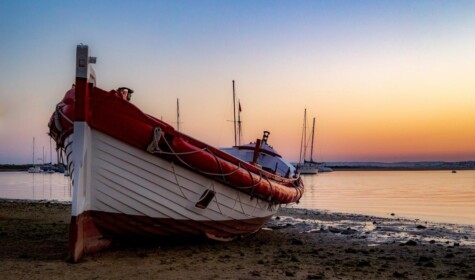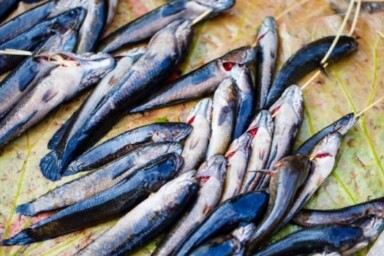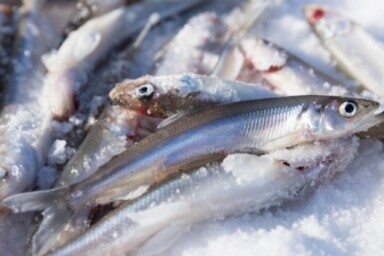Over one year on from the release of Seaspiracy (see review), which served as a wake-up call in terms of how we view seafood sustainability, little has changed surrounding the desperate state of our oceans. If we continue decimating fish stocks with unsustainable fishing practices, there is a terrible danger that this delicate ecosystem – which is far bigger than that of earth’s land masses – will collapse to the profound detriment of the human population.
For many cultures around the world, fish and other seafood are a vital food source on which livelihoods and communities are based. However, overfishing has become rife around the globe, with industrial fishing fleets largely responsible. As a result of their dominance on the seas, small-scale localised fishing, which is generally far more sustainable, has been sold well short of what is deserved.
While Seaspiracy made a potent argument for the complete cessation of fishing, the reality of this is unlikely. But eating fish is something we must think very carefully about. Sightings along the Southwest coast and Wales of Atlantic Bluefin Tuna last year indicated an increase in their population and led to excitement in local fisherman about the opportunity to fish these big creatures – but is this really an appropriate response to a species finally recovering from significant decline? These are questions we really need to ask.
Above all, if we do eat fish, we should eat it as a precious food source and ensure that what we eat is sustainable in the immediate and longer term.
What fish should we avoid?
According to the UN, the fraction of fish stocks within biologically sustainable levels is declining year-on-year, which ultimately indicates that overall, we need to drastically reduce our fish consumption. In the UK more specifically, only a third of the key fish stock on which the fishing industry relies are considered to be healthy. So, before we go on to highlight the most sustainable seafood options for UK consumption, it’s perhaps best to start with the species that, wherever possible, should be avoided.
Unsurprisingly, the fish that are most at risk in the UK are those which we enjoy eating the most. Known as ‘the Big Five’, the most widely consumed fish in this country are cod, salmon, haddock, tuna and prawns. That’s not to say that those species are always unsustainable to eat – it largely depends on how they are sourced – but as a general rule, it’s best to opt for more unusual options, to allow the ‘Big Five’ fish stocks to recover. And besides, with more than 150 different species of fish caught in British waters, we are spoilt for choice.
What fish should we eat?
When looking into the sustainability of our seafood choices, the Marine Conservation Society (MCS) Good Fish Guide is a great place to start. It uses a five-tiered system to rank each species from ‘Best Choice’ to ‘Fish to Avoid’, based on the species itself, its location and the fishing methods used to catch it. Thankfully, it indicated that there are several species that are safe to consume in the UK. Among them are:
Cornish hake
This fish has bounced back to sustainability in recent years due to a recovery plan implemented in the 1990s, with stocks healthy and increasing (also across Northern Europe). It’s a great example of what well-managed fisheries can do. Hake is a firm meaty fish, utterly delicious, and similar to much overfished cod. It’s largely caught with gill-nets which do have problems with by-catch, but this has been mitigated by the requirement to have ‘pingers’ on all boats over 10 metres to deter dolphins and other cetaceans. The Cornish Hake Fishery also uses a larger net than required so that smaller, juvenile hake don’t get caught. It’s rated a 1 (i.e. one of the most sustainable fish in UK waters) by the MSC .
Handline-caught mackerel
Mackerel is such a fantastic UK fish and when it’s ‘handline-caught’, it’s at its most sustainable. This fishing method is low impact, primarily used by small, under 10 metre boats; it doesn’t impact the seabed nor is there a significant problem with bycatch. However, that’s where its sustainability stops – in 2019 mackerel was put on the MSC red list because stocks in Europe have been in decline. In Cornish waters industrial fishing of mackerel has been banned, so stick with those small boats for your fish.
Cornish Sardines
Previously known as pilchards, but rebranded as sardines in the 1990s, these fish are extremely high in omega-3. Globally, sardine stocks have suffered due to overfishing to supply industrial salmon farms, however Cornish sardine stocks are believed to be healthy. The Cornish Sardine Management Association, a group of Cornish fishermen and fish processors who aim to protect the stocks, have received MSC certification for the sardines they catch.
Dover Sole
Beyond Cornish hake, sardines and handline-caught mackerel, there are a few other fish that are holding a place in the sustainability ratings, albeit somewhat lower down the line. Dover sole is still quite sustainable, with healthy populations along the Southwest coast of the UK, in the English Channel and Irish Sea. However, method of catch varies, with issues of bycatch, especially in relation to plaice, and damage to the seabed from certain kinds of trawling.
And that’s really it for the safely sustainable fish in the UK, though it also really matters if your fish is brought in by small-scale UK fishermen. There’s another side to the coin on this one and they are far less impactful in how they fish.
What’s the alternative: A focus on shellfish
Shellfish are quite remarkable and have long been a significant British food source. Oysters, mussels, cockles and whelks were widely eaten in the 19th century, but now they are not so cherished. Shockingly, up to 85% of all British shellfish is exported. While adored elsewhere – especially in Spain – our native speciality is simply not appealing to the British public anymore. But when it comes to sustainability, shellfish present an unrivalled opportunity, particularly one category of shellfish, known as bivalves.
Bivalves are incredible creatures that make a case for themselves as the most environmentally sound species of farmed food. Representing any mollusc with a hinged shell – such as mussels, oysters, clams and scallops – they are filter feeders living on microscopic organic matter, ensuring the water they live in is clean. The food they provide to those that eat them is rich in nutrients; they have high levels of omega-3 fatty acids and a raft of micronutrients. They even have a sideline in sequestering carbon. To ‘farm’ them requires no more than water. Seriously, what more could you ask for? So, skip the fish next time and make yourself a fried oyster sandwich – it’s little bit of heaven.
The one thing you shouldn’t do, however, is eat wild species that are obtained by commercial dredging, so make sure you know where your bivalves come from.
To conclude, the quest for sustainable seafood in the UK is by no means an easy feat – but there are options out there. Rather than sticking to our longstanding favourites, try something new, especially if it comes in a hinged shell! And when it comes to fish, think about all the aspects of its sustainability: how healthy its stocks are, when you should eat it (fish are seasonal too) and the method with which it was caught. Sustainability manifests itself in various ways, so make sure you look at the bigger picture. Knowing how your food is produced, by whom, and the impact it has on the wider environment is the most important thing of all.





